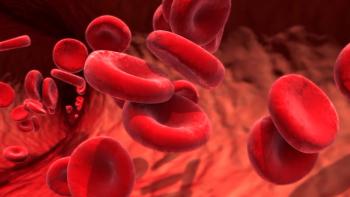
Hyponatremia in Elderly Patients With Fragility Fractures: Clarifying the Source
The results of a new study contradict the long-standing belief that syndrome of inappropriate anti-diuretic hormone is the most common cause of hyponatremia in elderly patients with fragility fractures.
The results of a new study contradict the long-standing belief that syndrome of inappropriate anti-diuretic hormone is the most common cause of hyponatremia in elderly patients with fragility fractures.
Electrolyte imbalances occur often in clinical practice, and low sodium levels are the most common. For decades, most clinicians believed hyponatremia (defined as a serum sodium level under 135 mMol/L) was, for the most part, asymptomatic and harmless. Increasing evidence challenges this assumption. Among the poor clinical outcomes associated with hyponatremia are falls and fractures, longer hospital stays, and an increased likelihood of death, especially in the frail elderly. Elderly patients with fragility fractures (EPFF) are particularly susceptible to hyponatremia and its consequences. This increased risk is associated with declining physiology, multiple comorbidities, polypharmacy, potential dehydration due to hospitalization and perioperative fluid restriction, and homeostatic stress from fracture and ensuing surgical interventions.
Many patients present with euvolemic hyponatremia, and traditionally clinicians have attributed this condition to syndrome of inappropriate anti-diuretic hormone (SIADH). Studies pinpointing specific causes are lacking. A prospective observational
The study included 127 adults aged 65 years or older who were admitted with a fragility fracture to a university hospital between January 7 and April 4, 2013. The researchers screened for hyponatremia on admission and during hospitalization. They found that 26% of EPFF (33 of 127) had or developed hyponatremia. An expert panel determined the cause of hyponatremia by consensus for each patient.
Among study participants, 13.4% had hyponatremia on admission and 12.6% developed hyponatremia during their hospital stay. In almost three-fourths of the patients, hyponatremia was hypovolemic. The expert panel determined that 73% of cases had multiple causes. Thiazide diuretics (76%), dehydration (70%), proton pump inhibitors (70%), SIADH (27%), and mirtazapine (15%) were the most common etiologies.
The researchers’ results contradicted the long-standing belief that SIADH is the most common cause of hyponatremia in EPFF. Dehydration and prescription drugs—thiazide diuretics and proton pump inhibitors—were significantly more likely to cause hyponatremia.
Ms. Wick is a visiting professor at the University of Connecticut School of Pharmacy and a freelance writer from Virginia.
Newsletter
Stay informed on drug updates, treatment guidelines, and pharmacy practice trends—subscribe to Pharmacy Times for weekly clinical insights.









































































































































































































